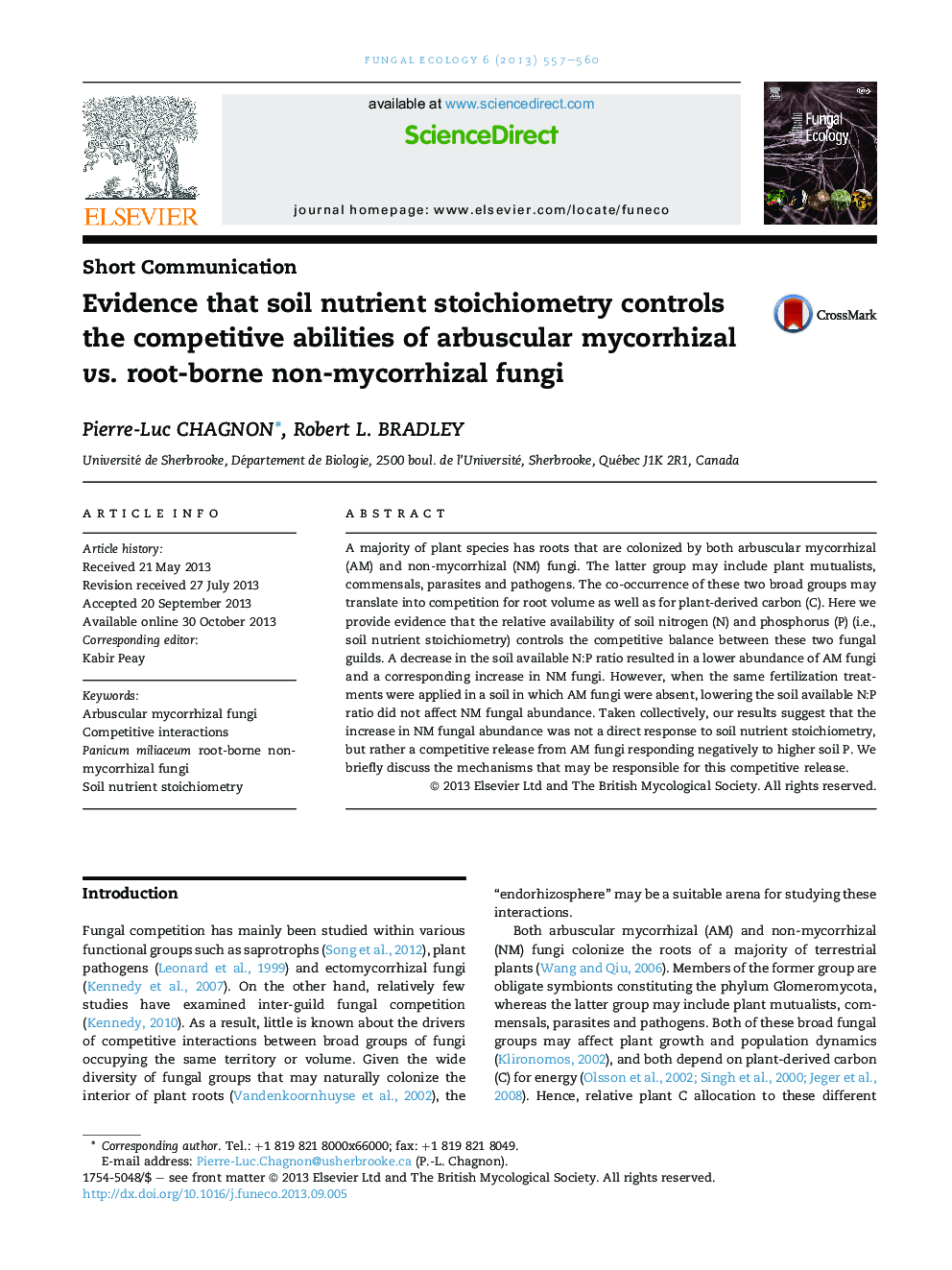| Article ID | Journal | Published Year | Pages | File Type |
|---|---|---|---|---|
| 2053863 | Fungal Ecology | 2013 | 4 Pages |
A majority of plant species has roots that are colonized by both arbuscular mycorrhizal (AM) and non-mycorrhizal (NM) fungi. The latter group may include plant mutualists, commensals, parasites and pathogens. The co-occurrence of these two broad groups may translate into competition for root volume as well as for plant-derived carbon (C). Here we provide evidence that the relative availability of soil nitrogen (N) and phosphorus (P) (i.e., soil nutrient stoichiometry) controls the competitive balance between these two fungal guilds. A decrease in the soil available N:P ratio resulted in a lower abundance of AM fungi and a corresponding increase in NM fungi. However, when the same fertilization treatments were applied in a soil in which AM fungi were absent, lowering the soil available N:P ratio did not affect NM fungal abundance. Taken collectively, our results suggest that the increase in NM fungal abundance was not a direct response to soil nutrient stoichiometry, but rather a competitive release from AM fungi responding negatively to higher soil P. We briefly discuss the mechanisms that may be responsible for this competitive release.
